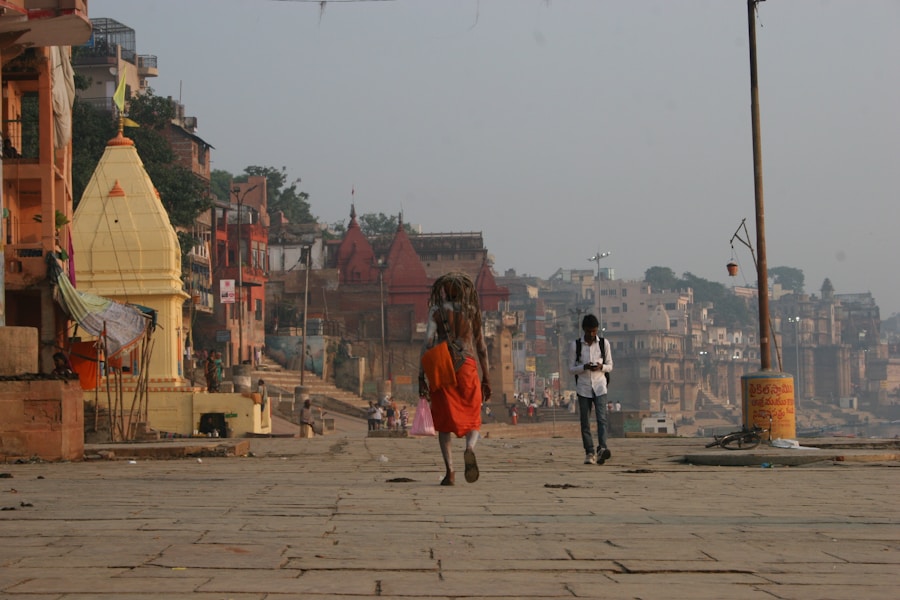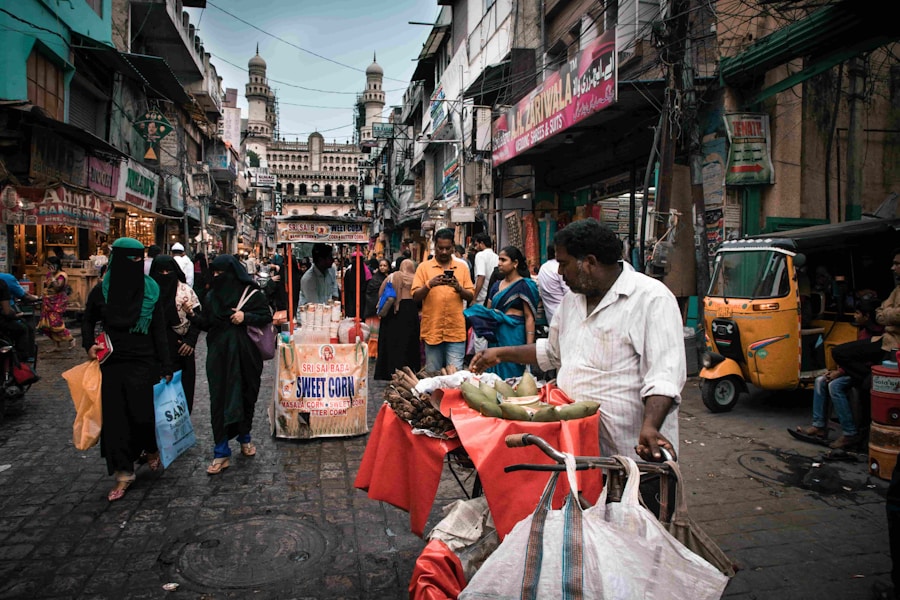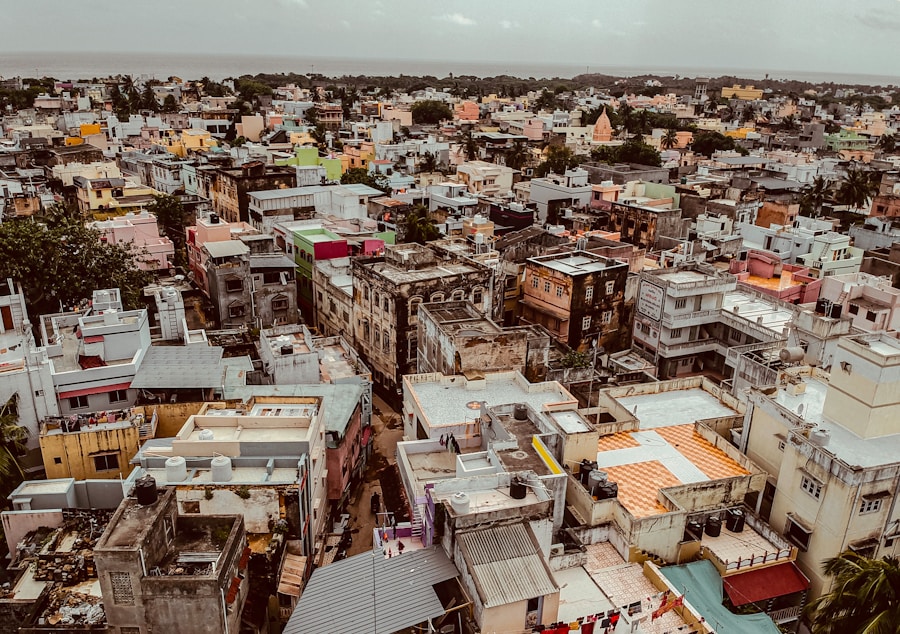Colonial urbanization in India represents a significant chapter in the country’s historical narrative, marked by profound transformations in its social, economic, and spatial landscapes. The British colonial period, spanning from the late 18th century to the mid-20th century, catalyzed a shift from traditional agrarian societies to urban centers characterized by new forms of governance, commerce, and culture. This urbanization was not merely a consequence of population growth or migration; it was intricately linked to the imperial ambitions of the British, who sought to exploit India’s resources while simultaneously reshaping its urban fabric to serve colonial interests.
The emergence of cities during this period was often a reflection of the colonial agenda, where urban spaces were designed to facilitate trade, administration, and military control. Cities like Bombay (now Mumbai), Calcutta (now Kolkata), and Madras (now Chennai) evolved into bustling metropolises, serving as critical nodes in the British Empire’s global network. The urbanization process was marked by the introduction of Western architectural styles, infrastructure development, and the establishment of institutions that would redefine urban life.
This transformation laid the groundwork for modern Indian cities, influencing their growth patterns and socio-economic dynamics long after independence.
Key Takeaways
- Colonial urbanization in India was a result of British rule and had a significant impact on the development of cities in the country.
- The impact of colonial rule on Indian urbanization was profound, leading to changes in infrastructure, governance, and social structure.
- Characteristics of colonial urbanization in India included the creation of segregated spaces for Europeans and Indians, as well as the introduction of modern amenities and transportation systems.
- The British colonial administration played a crucial role in urban development through the implementation of town planning, sanitation measures, and the establishment of administrative centers.
- The legacy of colonial urbanization in modern India can be seen in the layout of cities, the presence of colonial-era buildings, and the continued influence of British urban planning principles.
Impact of Colonial Rule on Indian Urbanization
The impact of colonial rule on Indian urbanization was multifaceted, encompassing economic, social, and political dimensions. Economically, the British established a framework that prioritized the extraction of resources and the generation of wealth for the empire. This led to the development of port cities that facilitated trade with Europe and other parts of the world.
For instance, the establishment of the East India Company’s trading posts catalyzed the growth of cities like Surat and Calcutta, which became vital commercial hubs. The influx of European goods and capital transformed local economies, often at the expense of traditional industries and crafts. Socially, colonial urbanization brought about significant demographic changes.
The migration of people from rural areas to urban centers in search of employment opportunities altered the social fabric of Indian society. This migration was often driven by the demand for labor in burgeoning industries such as textiles and jute processing. As a result, cities became melting pots of diverse cultures, languages, and communities.
However, this urban influx also led to challenges such as overcrowding, inadequate housing, and the emergence of slums, which highlighted the stark contrasts between wealth and poverty in colonial cities.
Characteristics of Colonial Urbanization in India

Colonial urbanization in India was characterized by distinct features that set it apart from pre-colonial urban development. One prominent characteristic was the imposition of Western architectural styles and urban planning principles. The British introduced grand colonial buildings, public parks, and wide boulevards that reflected European aesthetics and ideals.
Cities like New Delhi were designed with a clear vision of order and control, featuring spacious layouts that contrasted sharply with the organic growth patterns of traditional Indian cities. Another defining feature was the establishment of administrative and institutional frameworks that governed urban life. The British implemented municipal governance systems that aimed to regulate urban spaces and manage public health, sanitation, and infrastructure.
These systems often marginalized local voices and traditional governance structures, leading to tensions between colonial authorities and indigenous populations. The introduction of railways and roads further facilitated connectivity between urban centers and rural hinterlands, reshaping trade routes and migration patterns.
Role of British Colonial Administration in Urban Development
The British colonial administration played a pivotal role in shaping urban development across India. Their policies were often driven by strategic interests aimed at consolidating power and enhancing economic productivity. The establishment of municipal corporations in major cities marked a significant shift in governance, as these bodies were tasked with managing urban infrastructure and services.
However, these corporations were often dominated by British officials and excluded local representation, leading to a disconnect between governance and the needs of the populace. Infrastructure development was another critical aspect of British involvement in urbanization. The construction of railways not only facilitated the movement of goods but also transformed social dynamics by enabling people to travel between rural areas and cities more easily.
This connectivity spurred economic activities but also contributed to the rapid growth of urban populations. Additionally, public health initiatives were introduced to combat diseases that proliferated in overcrowded urban environments; however, these measures often prioritized European neighborhoods over indigenous areas, reflecting colonial biases in urban planning.
Legacy of Colonial Urbanization in Modern India
The legacy of colonial urbanization is deeply embedded in the fabric of modern Indian cities. Many contemporary urban centers still bear the architectural imprints of colonial rule, with grand buildings serving as reminders of a bygone era. The layout of cities like Mumbai and Kolkata continues to reflect colonial planning principles, with wide roads and distinct zones for commercial and residential activities.
This historical influence is evident not only in physical structures but also in socio-economic disparities that persist today. Moreover, the patterns of migration established during colonial times have continued into modernity. Urban areas remain magnets for rural populations seeking better opportunities, leading to ongoing challenges related to housing, infrastructure, and social services.
The legacy of colonial governance structures can also be seen in contemporary municipal systems that grapple with issues such as corruption, inefficiency, and inadequate representation. As India navigates its post-colonial identity, understanding this legacy is crucial for addressing current urban challenges and fostering inclusive development.
Challenges and Criticisms of Colonial Urbanization in India

Exclusionary Practices and Socio-Economic Inequalities
Colonial urbanization has had a profound impact on Indian cities, but it has also been criticized for its exclusionary practices and socio-economic inequalities. One major challenge was the prioritization of European interests over those of local populations. Urban planning often reflected colonial ideologies that marginalized indigenous communities, leading to spatial segregation where affluent neighborhoods were developed for Europeans while local populations were relegated to overcrowded slums with limited access to basic services.
Environmental Consequences of Colonial Urbanization
The environmental consequences of colonial urbanization have been profound. Rapid industrialization led to pollution and degradation of natural resources, issues that continue to plague modern Indian cities. The lack of sustainable planning during the colonial era has resulted in ongoing challenges related to waste management, air quality, and water scarcity. Critics argue that these environmental issues are rooted in a colonial mindset that prioritized economic gain over ecological balance.
The imposition of foreign governance structures disrupted traditional systems of authority and community organization. This disruption has contributed to ongoing tensions between different social groups within urban areas, as historical grievances continue to shape contemporary interactions among diverse communities. In summary, while colonial urbanization played a crucial role in shaping modern Indian cities, it also introduced significant challenges that continue to resonate today. Understanding this complex legacy is essential for addressing current urban issues and fostering a more equitable future for all citizens in India’s rapidly evolving urban landscape.
In a related article discussing India as a plural society, social institutions, and practices, the complexities of colonial urbanization in India are further explored. The article delves into how the diverse social structures and cultural practices in India were impacted by colonial rule and urban development.






















+ There are no comments
Add yours